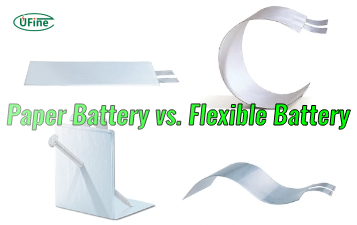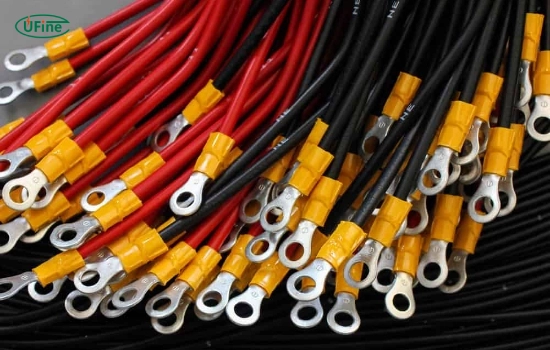Battery and cable connectors play a crucial role in the functionality of electronic devices, vehicles, and various applications requiring power transfer. Understanding the different types of connectors, their uses, and how to choose the right one can significantly impact performance and safety. This comprehensive guide will explore battery and cable connectors in detail, providing insights into their types, applications, and selection criteria.
Part 1. What are battery connectors?
Battery connectors are essential components that connect batteries and electrical devices. They ensure a secure and efficient power transfer, allowing devices to function correctly. Battery connectors come in various types, each designed for specific applications and power requirements.
Common Types of Battery Connectors:
- Barrel Jack Connectors: Often used for low-voltage applications, power adapters for electronic devices commonly feature these connectors.
- XT Connectors (XT30, XT60, XT90): Widely used in the RC hobby industry, these connectors handle different current levels, making them suitable for drones, electric bikes, and more.
- Deans Connectors: Known for their low resistance and compact size, Deans connectors are popular in RC vehicles.
- JST Connectors: Commonly used in low-current applications, JST connectors are ideal for connecting batteries to small electronics.
- Anderson Powerpole Connectors: These modular connectors are versatile and used in various settings, including RC vehicles and emergency power supplies.
Part 2. The importance of battery connectors
Battery connectors are not just about making a connection; they are vital for ensuring safety and efficiency. A poor connection can lead to power loss, overheating, or fire hazards. Therefore, selecting the correct connector type based on the application is essential.
Key Functions of Battery Connectors:
- Power Transfer: They facilitate the flow of electricity from the battery to the device.
- Safety: Proper connectors help prevent short circuits and potential hazards.
- Compatibility: Different devices require specific connectors to ensure a secure fit.
Part 3. What are cable connectors?
Cable connectors join cables to devices or other cables, enabling communication and power transfer. They are integral to various systems, including telecommunications, networking, and audio/video equipment.
Types of Cable Connectors:
- Coaxial Cable Connectors: These connectors, which are used primarily in cable television and internet connections, include BNC, F-series, and N-series connectors.
- Twisted Pair Cable Connectors: Commonly used in networking, these connectors include RJ45 and modular jacks, essential for Ethernet connections.
- Fiber-Optic Cable Connectors: These connectors, such as SC, LC, and ST types, are used for high-speed data transmission in telecommunications.
Part 4. The role of cable connectors
Cable connectors ensure that signals and power are transmitted effectively between devices. They are crucial in maintaining data integrity and power transfer, especially in complex systems.
Key Functions of Cable Connectors:
- Signal Integrity: Quality connectors minimize signal loss and interference.
- Ease of Installation: Many connectors are designed for quick and easy installation, facilitating maintenance and upgrades.
- Versatility: Different types of connectors can accommodate various cable types and applications.
Part 5. How to choose the right battery and cable connectors?
Battery Connectors
Selecting the appropriate battery connector is crucial for ensuring optimal performance and safety. Here are some factors to consider:
- Current Rating: Ensure the connector can handle the required current for your application.
- Voltage Rating: Choose a connector that can withstand the voltage levels of your system.
- Size and Compatibility: Ensure the connector fits the battery terminals and the device’s requirements.
- Material: Consider connectors from materials with good conductivity and corrosion resistance, such as copper or gold-plated.
Cable Connector
When selecting cable connectors, consider the following:
- Type of Cable: Match the connector type to the cable, whether coaxial, twisted, or fiber-optic.
- Application Needs: Different applications may require specific connector features, such as weather resistance or high-speed data transfer.
- Installation Requirements: Some connectors may require special tools for installation, while others allow for quick connections.
Part 6. Installation tips for battery and cable connectors
Proper installation of connectors is vital for ensuring reliable performance. Here are some tips:
- Clean the Terminals: Before connecting, ensure that the battery terminals and connector surfaces are clean to prevent corrosion.
- Use the Right Tools: Employ appropriate tools for crimping or soldering connectors to ensure a secure fit.
- Check Polarity: Always connect the positive terminal first, followed by the negative terminal, to minimize the risk of short circuits.
- Test the Connection: After installation, test the connection to ensure proper functionality.
Common Mistakes to Avoid
When dealing with battery and cable connectors, inevitable mistakes can lead to issues:
- Using Incompatible Connectors: Always ensure connectors are compatible with the devices and cables.
- Neglecting Maintenance: Regularly check connections for wear and corrosion and replace connectors.
- Overloading Connectors: Ensure you rate connectors for the current and voltage they will carry to prevent overheating.
Part 7. FAQs
-
What is the difference between battery connectors and cable connectors?
Battery connectors connect batteries to devices. In contrast, cable connectors join cables to devices or other cables for signal and power transfer. -
How do I know which battery connector to use?
Consider your application’s current and voltage requirements, as well as the size and compatibility of the connector with your battery and device terminals. -
Can I use any cable connector for my project?
No, it is essential to choose a connector that matches the type of cable and the specific requirements of your application to ensure reliable performance. -
What materials are best for connectors?
Copper or gold-plated connectors offer good conductivity and corrosion resistance, making them ideal for battery and cable connections. -
How often should I check my connectors?
It is advisable to inspect connectors regularly for signs of wear, corrosion, or damage, especially in applications where they are frequently connected and disconnected.
Related Tags:
More Articles

Paper Battery vs. Flexible Battery: What’s the Difference and Which Is Better?
Paper vs. flexible batteries: learn the key differences, benefits, and which power source fits best for wearables, sensors, and smart tech.
What to Know Before Buying a Tiny LiPo Battery for Your Project
Tiny LiPo batteries are powerful and compact. Learn how to choose the right one for your project with specs, safety, and charging tips.
Bloated LiPo Battery: Will It Explode?
Will a bloated LiPo battery explode? Discover the causes, risks, safety steps, and expert tips to avoid disaster and protect your gear. Must-read safety guide!
12V 100Ah Lithium Ion Battery Price: Full Guide
Learn about 12V 100Ah lithium-ion battery price, from cost ranges to best brands, hidden fees, and how to get the best deal. A must-read for smart buyers!
Resistance and Conductivity: What It Means for Your Lithium Batteries
Resistance and conductivity impact lithium battery performance, lifespan, and safety—learn how they work and why they matter.






